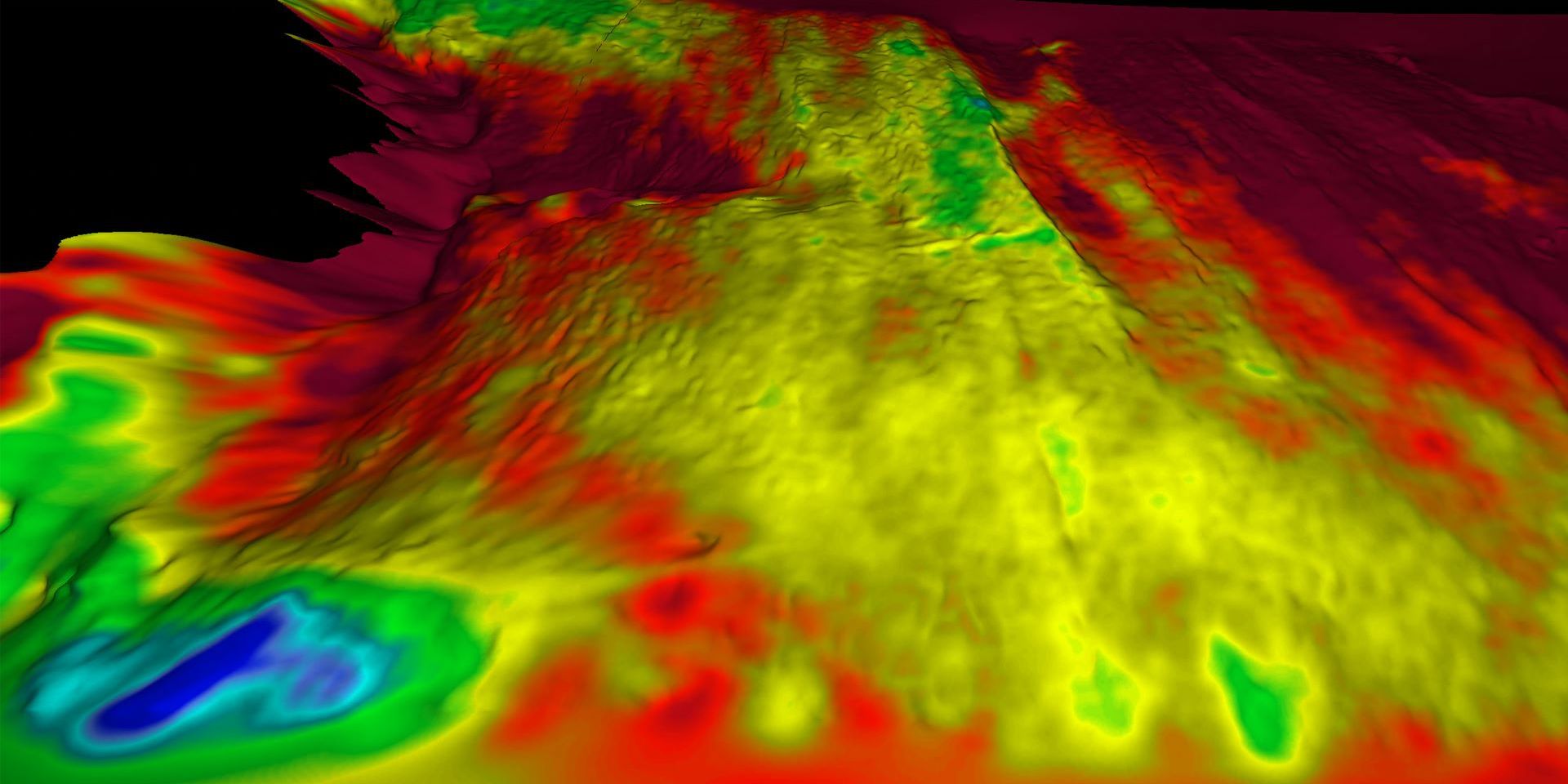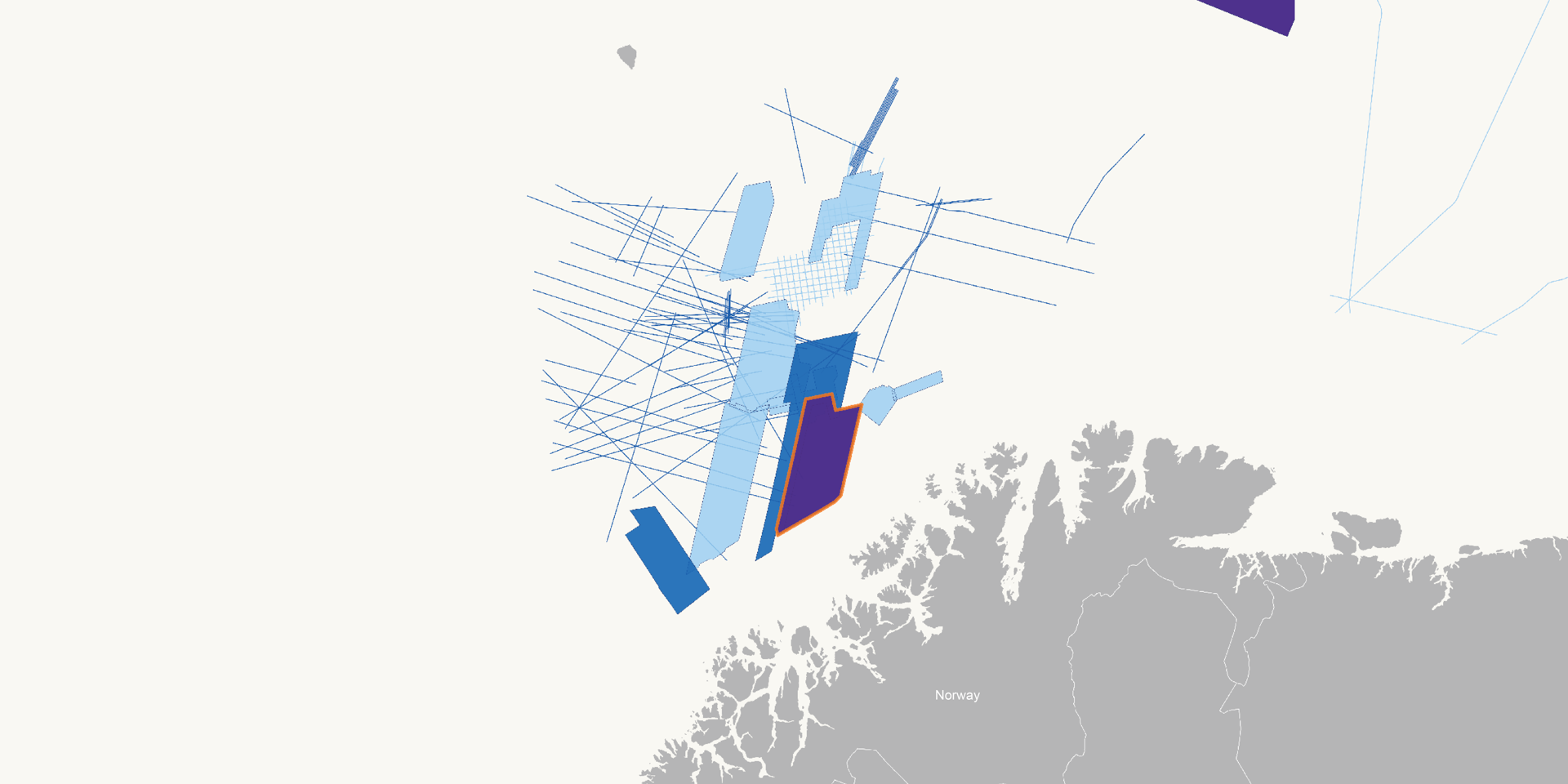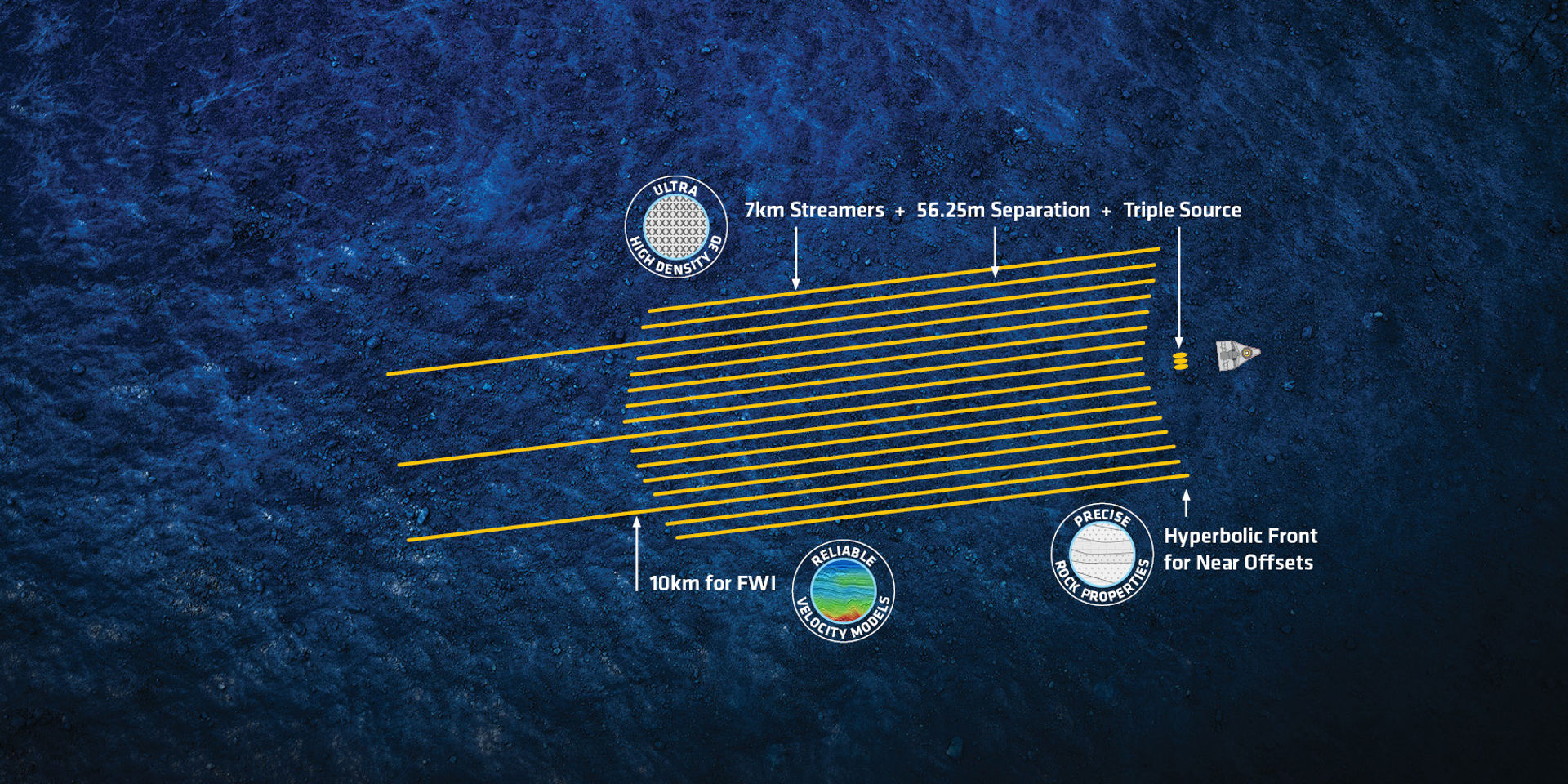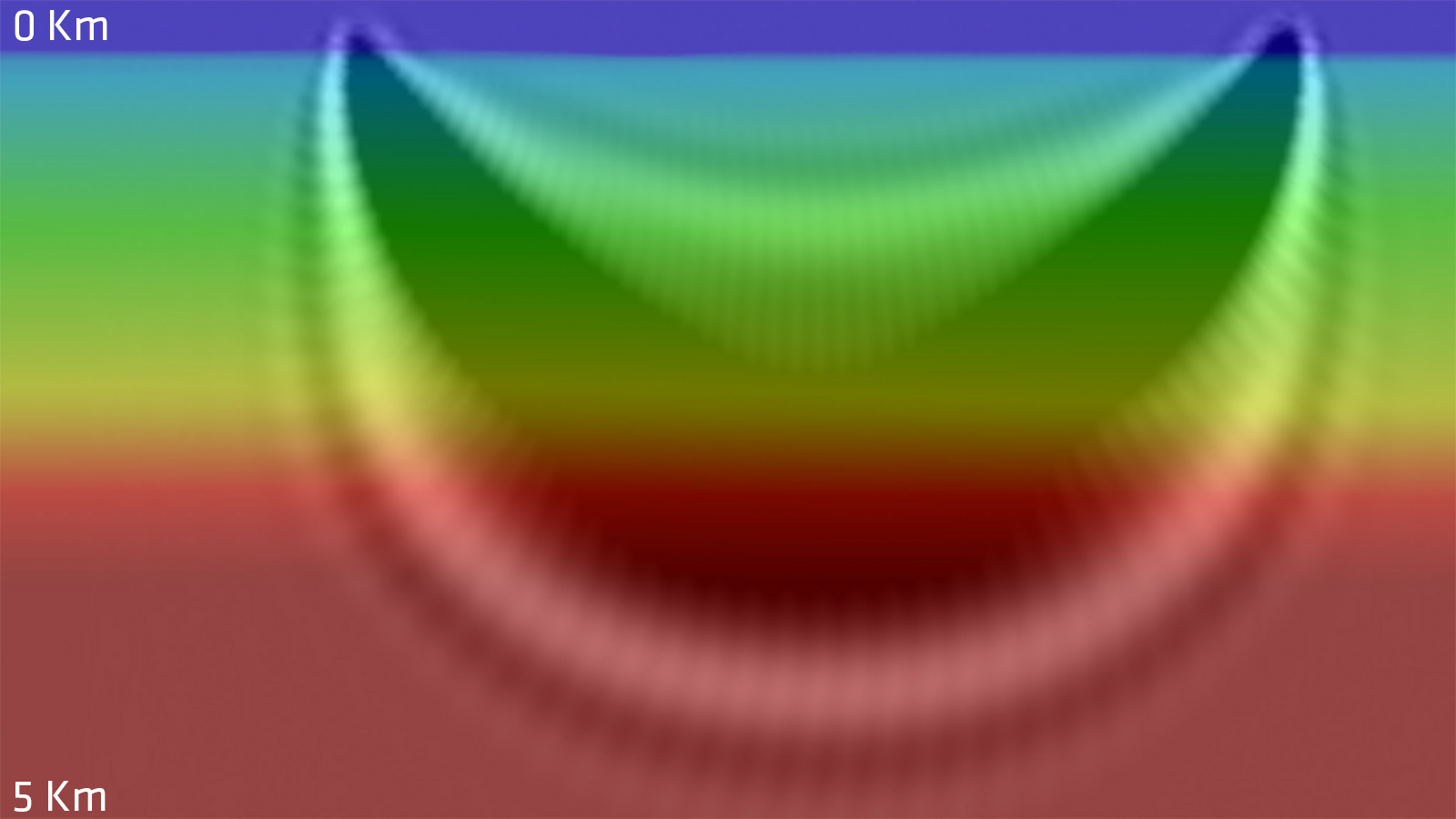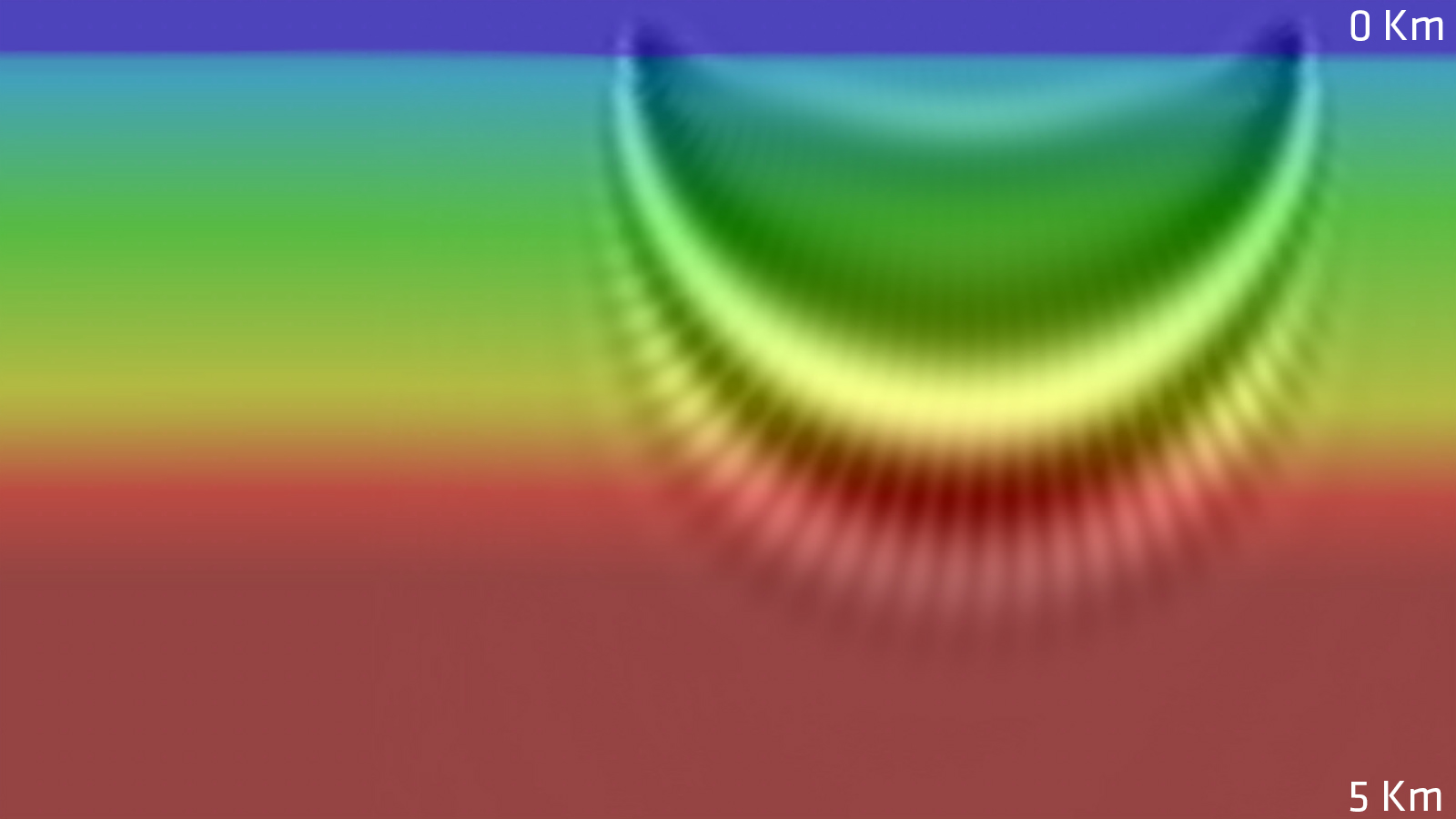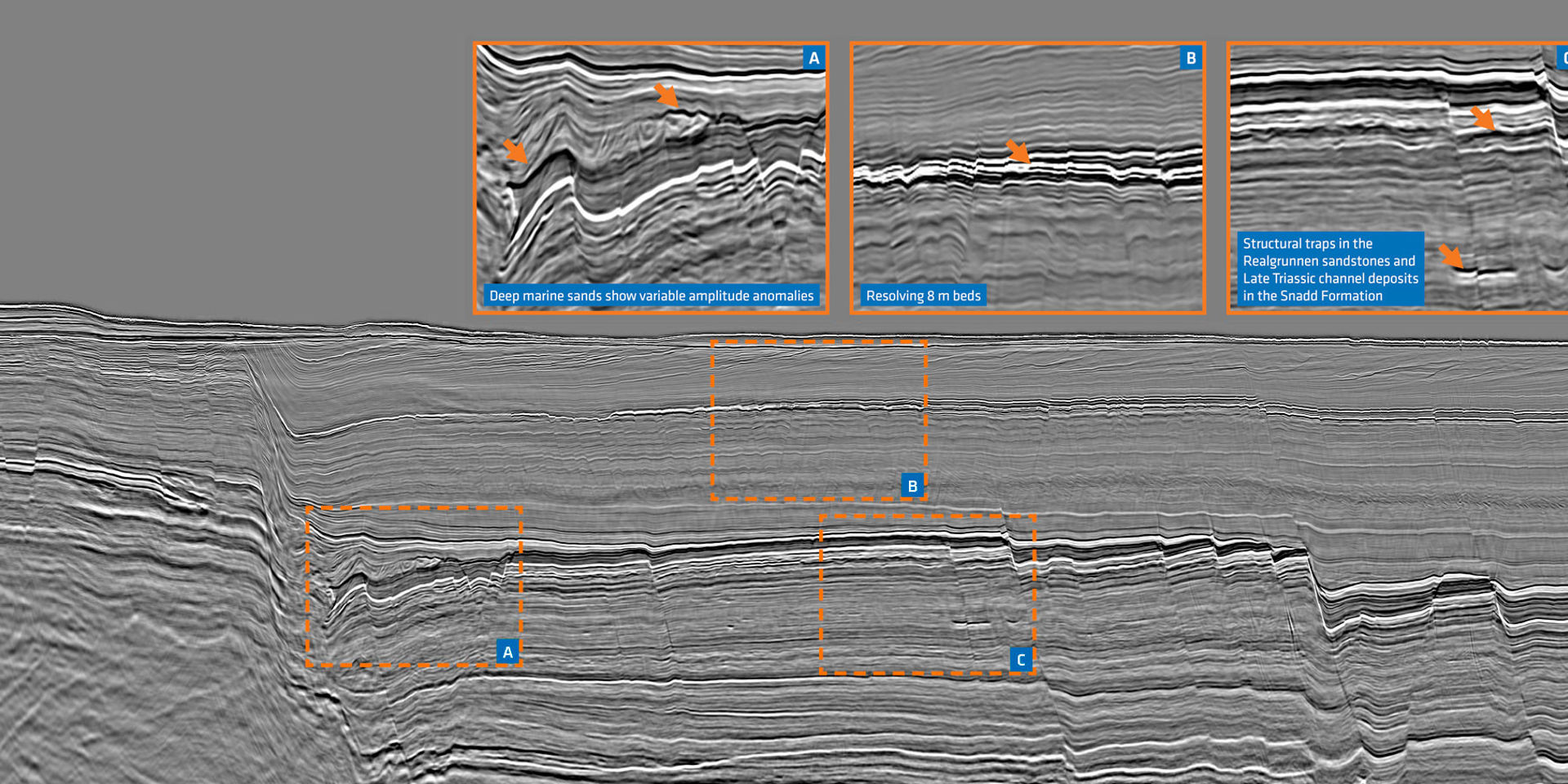Challenge
The south-western Barents Sea is characterized by a complex geological regime, with a heterogeneous overburden and different target depths (arrows). The combination of relatively shallow water depths and a hard, rugose sea floor, creates a tremendous amount of noise. This complicates using reflections in FWI for velocity updates. A key challenge in producing an accurate image of the subsurface is creating a reliable velocity model. Refraction based FWI has become the standard tool for velocity model building in the Barents Sea. However, due to the lack of recorded long offsets, model depths have been limited. Identifying porous carbonate buildups and sands has previously been difficult on legacy seismic data.
